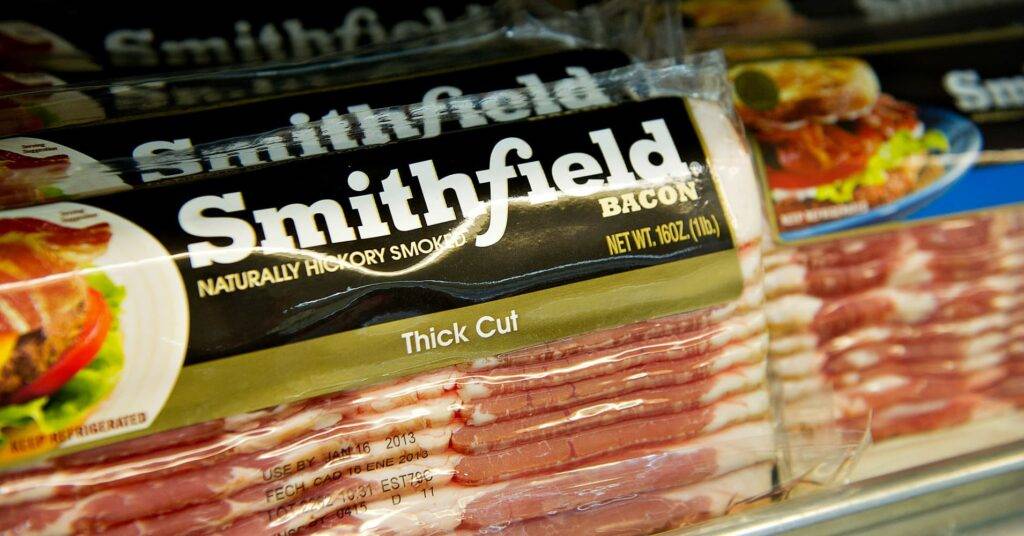EEOC Brings Lawsuit Against Smithfield Foods for Age Discrimination
The US Equal Employment Opportunity Commission (EEOC) has initiated legal action against Smithfield Foods Inc., accusing the meat processing giant of terminating a senior sales employee based on her age. This lawsuit highlights significant concerns regarding age discrimination in the workplace, a violation under the Age Discrimination in Employment Act (ADEA).
Background of the Allegations
The lawsuit centers on a former Smithfield Foods employee who had dedicated 10 years to the company. At the age of 59, she was terminated, which the EEOC argues was a direct result of her age. Smithfield Foods contends that the termination was part of a broader reduction-in-force strategy aimed at downsizing its sales staff. However, the details of the reduction raise questions about the true motives behind her dismissal.
According to the lawsuit, the reduction-in-force disproportionately affected older employees. Specifically, five out of the six terminated employees were aged 55 or older, while a significantly smaller proportion of employees under the age of 55 were let go—only four out of 18. This discrepancy forms the crux of the EEOC’s argument that age was a determining factor in the termination decisions.
Contradictory Termination Reasons
Initially, Smithfield Foods informed the employee that her termination was due to the reduction-in-force. However, the company later claimed that her dismissal was due to her refusal to relocate to the company’s headquarters in Smithfield, Virginia. Despite this claim, the employee had continued to work remotely from her home in the Atlanta area for approximately 15 months following the initial notice of termination.
This inconsistency in the reasons provided for her termination further fuels the EEOC’s allegations. The lawsuit suggests that the company used the relocation issue as a pretext to justify her dismissal, masking the underlying motive of age discrimination.
EEOC’s Legal Action
After unsuccessful attempts to reach a pre-litigation settlement through its administrative conciliation process, the EEOC decided to take the case to court. The lawsuit will be heard in the US District Court for the Northern District of Georgia. The EEOC is seeking remedies for the alleged discrimination, including back pay, reinstatement, or front pay, as well as compensatory and punitive damages for the affected employee.
Importance of the Age Discrimination in Employment Act (ADEA)
The ADEA, enacted in 1967, prohibits employment discrimination against individuals who are 40 years of age or older. The law aims to promote employment based on ability rather than age and to eliminate arbitrary age limits in employment. In this lawsuit, the EEOC contends that Smithfield Foods violated the ADEA by terminating the employee based on her age rather than her job performance or willingness to relocate.
Broader Implications for the Industry
This lawsuit against Smithfield Foods underscores the persistent issue of age discrimination in the workplace. Age discrimination can have far-reaching consequences, not only for the individuals directly affected but also for organizational culture and morale. It can lead to the loss of experienced and skilled employees, reduced diversity, and potential legal and financial repercussions for companies found in violation of the ADEA.
The case also highlights the importance of transparent and consistent communication from employers regarding termination decisions. Discrepancies or changes in the stated reasons for termination can undermine trust and open companies to legal challenges.
Legal and Industry Reactions
The EEOC’s decision to pursue this lawsuit has been met with varied reactions. Advocates for workers’ rights view it as a necessary step to enforce anti-discrimination laws and protect employees from unjust treatment based on age. They argue that the lawsuit serves as a reminder that age discrimination is illegal and that employers must be held accountable for their actions.
On the other hand, some industry representatives express concerns about the potential impacts of such lawsuits on business operations. They argue that companies may face increased legal scrutiny and potential financial burdens, which could affect their ability to make strategic workforce decisions. However, these concerns are balanced by the need to ensure fair treatment and equal opportunities for all employees, regardless of age.
Next Steps in the Legal Process
As the lawsuit proceeds, both the EEOC and Smithfield Foods will engage in the discovery phase, gathering and presenting evidence to support their respective claims. The outcome of this phase will be critical in determining the strength of the EEOC’s case and the validity of Smithfield Foods’ defense.
For the terminated employee, this lawsuit represents an opportunity to seek justice and redress for the alleged discrimination. If the court finds in her favor, it could result in significant financial compensation and potentially influence broader changes in Smithfield Foods’ employment practices.
Conclusion
The EEOC’s lawsuit against Smithfield Foods highlights the ongoing challenges of combating age discrimination in the workplace. As the case unfolds, it will serve as a critical test of the protections afforded by the ADEA and the commitment of regulatory bodies to enforce these protections.
For Smithfield Foods, the lawsuit presents a significant legal challenge and a potential reputational risk. The company’s response and the eventual outcome of the case will be closely watched by industry stakeholders, legal experts, and advocacy groups.
This case underscores the importance of fair employment practices and the need for companies to ensure that their workforce decisions are based on merit and not discriminatory factors. The resolution of this lawsuit could have lasting implications for Smithfield Foods and the broader industry, reinforcing the principles of equality and non-discrimination in the workplace.
Read: WH Group Profits Soar After Smithfield’s Strategic Overhaul

Source: MeatPoultry